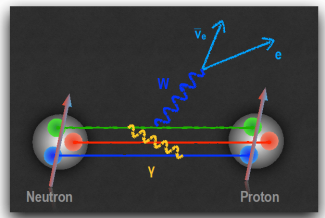Gail is recognized for seminal contributions to the study of neutrinos in explosive systems and for elucidating the profound impact of this microphysics on the synthesis of elements.
News and Announcements

This team of researchers collaborated in their findings with “New Insights on the Interplay of Electromagnetism and the Weak Nuclear Force”

Jerry is being recognized for thoughtful, stimulating, and caring mentorship in nuclear theory ranging from undergraduate students to research assistant professors.

Agnieszka is being recognized for an innovative approach to study the speed of sound in dense nuclear matter using moments of baryon distributions and developing of a framework of simulations and modeling of QCD phases and transitions in nucleus-nucleus collisions.

Michael is being recognized for seminal contributions in precision electroweak studies of nuclear and hadronic systems, making fundamental symmetry experiments powerful probes of strong interactions and new physics.

